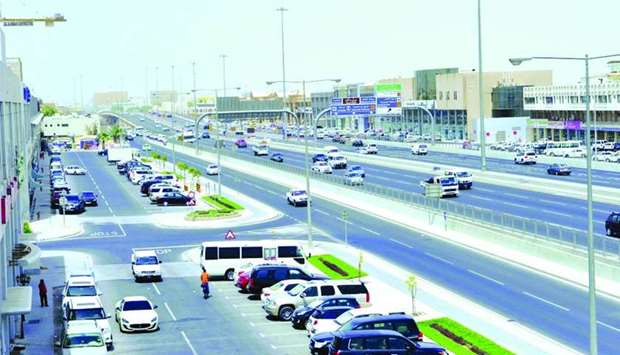Qatar’s “strong” fiscal stimulus package to support the non-oil private sector should cushion the country’s economic downturn, FocusEconomics said even as the researcher expects a growth of 3.4% in 2021.
The report said that Qatar’s fiscal balance as a percentage of GDP is set to rise to 4.5% in 2024 from an estimated -8.2% this year.
The country’s merchandise trade balance may scale up to $48.6bn in 2024 from $26.2bn this year, it said.
According to FocusEconomics, Qatar’s public debt (as a percentage of GDP) has been forecast to fall to 49.4 from 66.8 this year.
The country’s public debt as a percentage of the gross domestic product will fall continuously over the next four years, the researcher said.
It is projected at 63 next year, 57.9 (in 2022) and 53.6 in 2023.
Qatar’s GDP has been estimated to reach $220bn in 2024 from $166bn this year.
Next year, it will be $181bn, followed by $194bn (2022) and $207bn in 2023.
GDP per capita, FocusEconomics said, has been estimated to reach $79,060 in 2024 from $60,256 this year.
GDP per capita next year will be $65,369, followed by $70,110 in 2022 and $74,596 in 2023.
Qatar’s economic growth in terms of nominal GDP will reach 6.2% in 2024 from -9.3% by the year-end.
Next year, economic growth in terms of nominal GDP will be 8.7%, 7.5% in 2022 and 6.7% in 2023.
The current account balance (as a percentage of GDP) will be 3.3 in 2024 compared with -4.6 in 2020, -0.7 (2021), 4.1 (2022) and 3.7 in 2023.
International reserves may exceed $36.9bn in 2024, from $31.9bn this year.
The country’s inflation, the report noted, will be -0.6% this year, 1.7% (2021) and 1.9% between 2022 and 2024.
Qatar’s unemployment rate (as a percentage of active population) will remain a meagre 0.2% in 2024, unchanged from 2021. This year it will be a meagre 0.4%, FocusEconomics said.
The researcher noted the economy likely remained “depressed” in the second quarter, as the full effects of the lockdown and travel restrictions were felt. Since May, containment measures have been gradually eased, but international travel is expected to remain restricted until at least August 1, which “bodes poorly” for the tourism and retail sectors.
Moreover, “historically weak” hydrocarbon prices continued to weigh heavily on merchandise exports, which plummeted over 40% year-on-year in May, while the manufacturing and services sectors likely remained hampered throughout second quarter (Q2) as seen by the non-oil private sector PMI falling to a new low in May, before recovering somewhat in June.
Fitch Ratings affirmed Qatar’s ‘AA-’ credit rating with a stable outlook. The ratings agency noted that solid external buffers and favourable debt dynamics allow for a robust response to limit the fiscal impact from the pandemic.
Consumer prices fell 3.1% in annual terms in May, matching April’s fall, as Covid-19 dragged on activity. Consumer prices should drop on average this year due to the stark fall in domestic demand.
FocusEconomics sees consumer prices falling 0.6% in 2020, which is down 0.2 percentage points from last month’s forecast. In 2021, it sees inflation averaging 1.7%.
The country’s merchandise trade balance may scale up to $48.6bn in 2024 from $26.2bn this year, it said.
According to FocusEconomics, Qatar’s public debt (as a percentage of GDP) has been forecast to fall to 49.4 from 66.8 this year.
The country’s public debt as a percentage of the gross domestic product will fall continuously over the next four years, the researcher said.
It is projected at 63 next year, 57.9 (in 2022) and 53.6 in 2023.
Qatar’s GDP has been estimated to reach $220bn in 2024 from $166bn this year.
Next year, it will be $181bn, followed by $194bn (2022) and $207bn in 2023.
GDP per capita, FocusEconomics said, has been estimated to reach $79,060 in 2024 from $60,256 this year.
GDP per capita next year will be $65,369, followed by $70,110 in 2022 and $74,596 in 2023.
Qatar’s economic growth in terms of nominal GDP will reach 6.2% in 2024 from -9.3% by the year-end.
Next year, economic growth in terms of nominal GDP will be 8.7%, 7.5% in 2022 and 6.7% in 2023.
The current account balance (as a percentage of GDP) will be 3.3 in 2024 compared with -4.6 in 2020, -0.7 (2021), 4.1 (2022) and 3.7 in 2023.
International reserves may exceed $36.9bn in 2024, from $31.9bn this year.
The country’s inflation, the report noted, will be -0.6% this year, 1.7% (2021) and 1.9% between 2022 and 2024.
Qatar’s unemployment rate (as a percentage of active population) will remain a meagre 0.2% in 2024, unchanged from 2021. This year it will be a meagre 0.4%, FocusEconomics said.
The researcher noted the economy likely remained “depressed” in the second quarter, as the full effects of the lockdown and travel restrictions were felt. Since May, containment measures have been gradually eased, but international travel is expected to remain restricted until at least August 1, which “bodes poorly” for the tourism and retail sectors.
Moreover, “historically weak” hydrocarbon prices continued to weigh heavily on merchandise exports, which plummeted over 40% year-on-year in May, while the manufacturing and services sectors likely remained hampered throughout second quarter (Q2) as seen by the non-oil private sector PMI falling to a new low in May, before recovering somewhat in June.
Fitch Ratings affirmed Qatar’s ‘AA-’ credit rating with a stable outlook. The ratings agency noted that solid external buffers and favourable debt dynamics allow for a robust response to limit the fiscal impact from the pandemic.
Consumer prices fell 3.1% in annual terms in May, matching April’s fall, as Covid-19 dragged on activity. Consumer prices should drop on average this year due to the stark fall in domestic demand.
FocusEconomics sees consumer prices falling 0.6% in 2020, which is down 0.2 percentage points from last month’s forecast. In 2021, it sees inflation averaging 1.7%.


